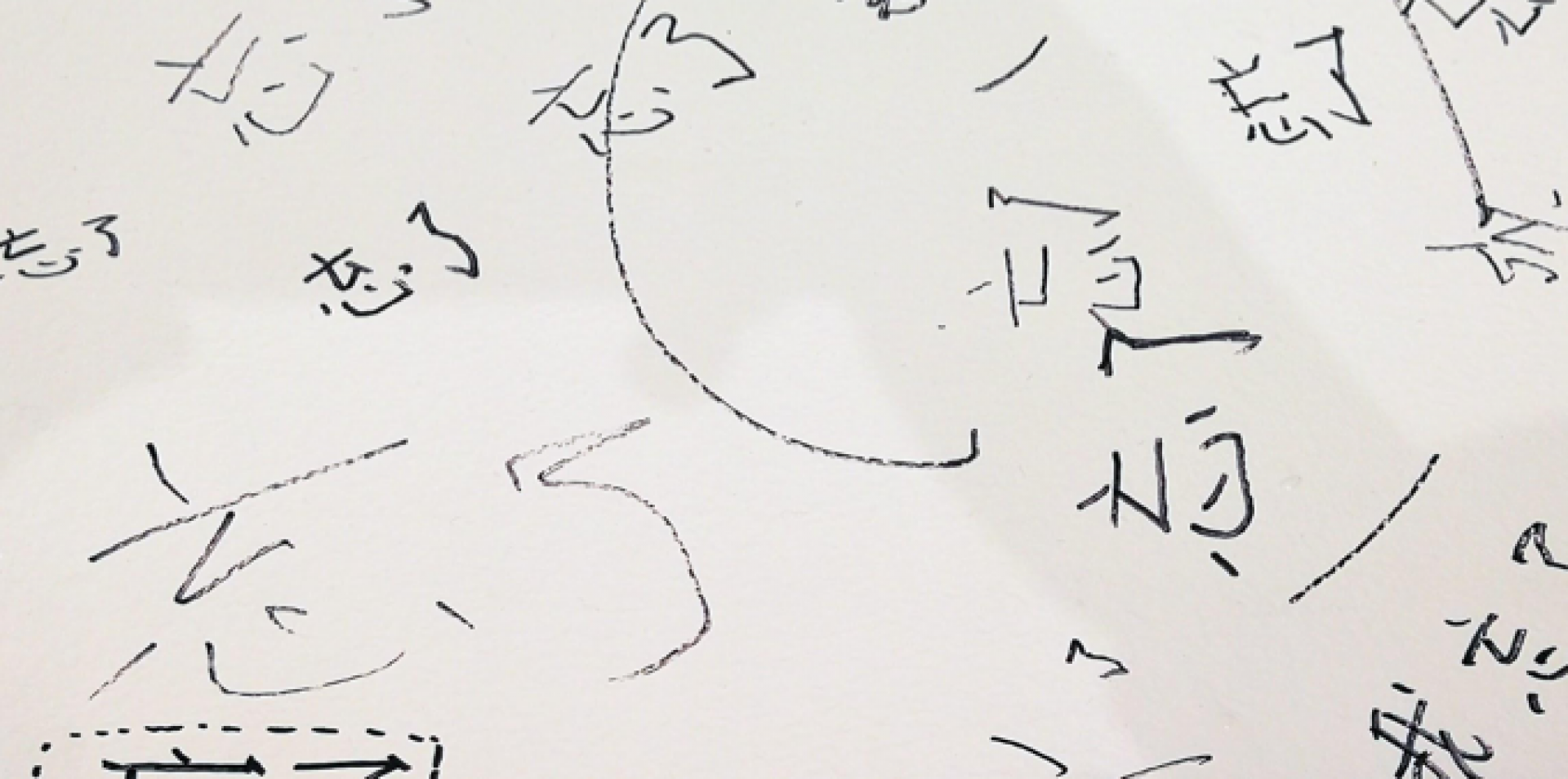by Wendelin Law
faces,
twisted
faces are
frozen by
soeng 霜
upon soeng;
the metallic
crystallisation
of a silent howl;
an unheard plea
rising above this
weighty plinth of
a rusted pillar; Red
is the soil, soaking
up the unspeakable
soeng 傷 that can
somehow topple the
mighty sky, searing,
the earth of gashes,
the tomb of thoughts;
the shredded history
buried next to some
mangled pieces of
somebody’s daughter,
somebody’s son; here,
faces scream: soeng! soeng!
soeng! but the last weak voices
are mutilated on this silenced
land, the land that witnessed
the harvest of young warm flesh.
When the iron tanks were crushing
bones, when the flying bullets were
piercing souls, when the country was killing
the future pillars of their own, the slaughterers
did not know, The old cannot kill the young forever,
no!—words that were carved into this stone, soon
to be fallen, and will never be known; but blood will
forever be running on the land of martyrs, the land of soeng 殤.
Wendelin Law: I remember seeing the Pillar of Shame (國殤之柱) for the first time when I was a kid. The ghoulish faces and the twisted bodies that seemed to keep stacking up into the sky; the rusty dark brown colour that was reminiscent of a mixture of soil and blood (this was before the pillar was painted orange in 2008); and the black plinth underneath the mounting bodies, on which was engraved in Chinese cursive script, “老人豈能夠殺光年輕人” (“The old cannot kill the young forever”)—all of these made me grapple with the meanings of oppression, atrocity, mass murder, grievance and 冤 (an ancient Chinese concept of injustice, of being wronged, which was metaphorised by the idiom 六月飛霜 “Hailing in June”, hence, 霜 “hail” was mentioned as the first “soeng” in the poem). Though I was very young when I first encountered the statue, I knew it depicted something solemn and monumental, I felt an ineffable horror from the faces’ silent howls.
Since I heard in October this year about the University of Hong Kong’s request to remove the Pillar, my grief has deepened. The sculpture commemorates the June Fourth Tiananmen Massacre of 1989, when Beijing cracked down on a student-led protest which demanded greater freedom, democracy and accountability of the government. Troops fired on protesters and tanks ran over crowds. This incident has since become a taboo in China and all related information is censored. There has never been an official death toll, but estimates vary from several hundred to more than ten thousand, with many of the dead dismembered by tanks.
For a long time, Hong Kong was the last city within the Chinese territory that the massacre could be commemorated. This changed in 2020, when the yearly candlelight vigil in Victoria Park was banned, and this time, after the enactment of the National Security Law, key organisers of the vigil were imprisoned and the related organisations were forced to disband, while the June Fourth Museum was also raided by the police. The authorities have found a new target to clamp down on in the Pillar of Shame. For many people of Hong Kong, the stature is a symbol of the right to remember. When its existence is no longer allowed, it’s a clear declaration of the death of freedom in Hong Kong.
This poem was written to pay tribute to the sculptor, Mr Jens Galschiøt. His art brought an important historical memory to life. There is an image in my mind where this soon-to-be-removed pillar is run over by invisible tanks. I hope that by transforming the Pillar of Shame into a shape poem, I can highlight that the message the pillar carries is in fact intangible, and so can never be cut down; that it will always find its way to materialise in other forms, such as this poem. The poem also intends to demonstrate a desire to resist forgetting and being forgotten; that any sort of advancement is never brought by the erasure of history, nor the deliberate downplaying and blanking out of an atrocity; that nothing can ever justify a massacre.
Published: Thursday 2 December 2021[RETURN TO AUDITORY CORTEX 2021]

![]()
Wendelin Law (@wendylawwrites) was born and raised in Hong Kong’s concrete jungle. She dislikes conformity and loves to experiment with form. She believes in freedom and democracy––the same ideals shared with the many young Hong Kong protestors who are being imprisoned right now. Wendelin won second prize in RTHK Hong Kong’s Top Story Competition 2020 and won the Hong Kong Writers’ Circle prize for the most creative short story in 2017. You can find her works in From Arthur’s Seat and Voice & Verse Poetry Magazine.
